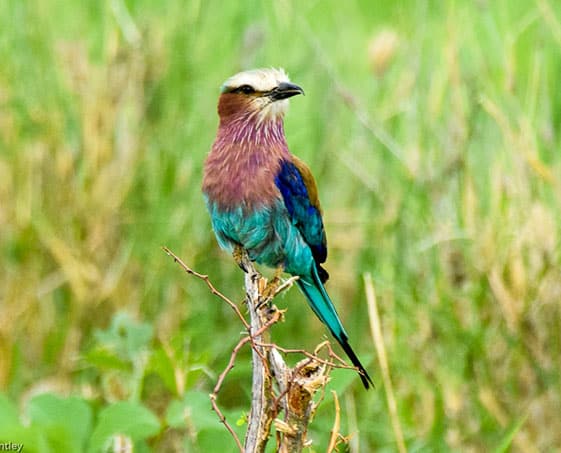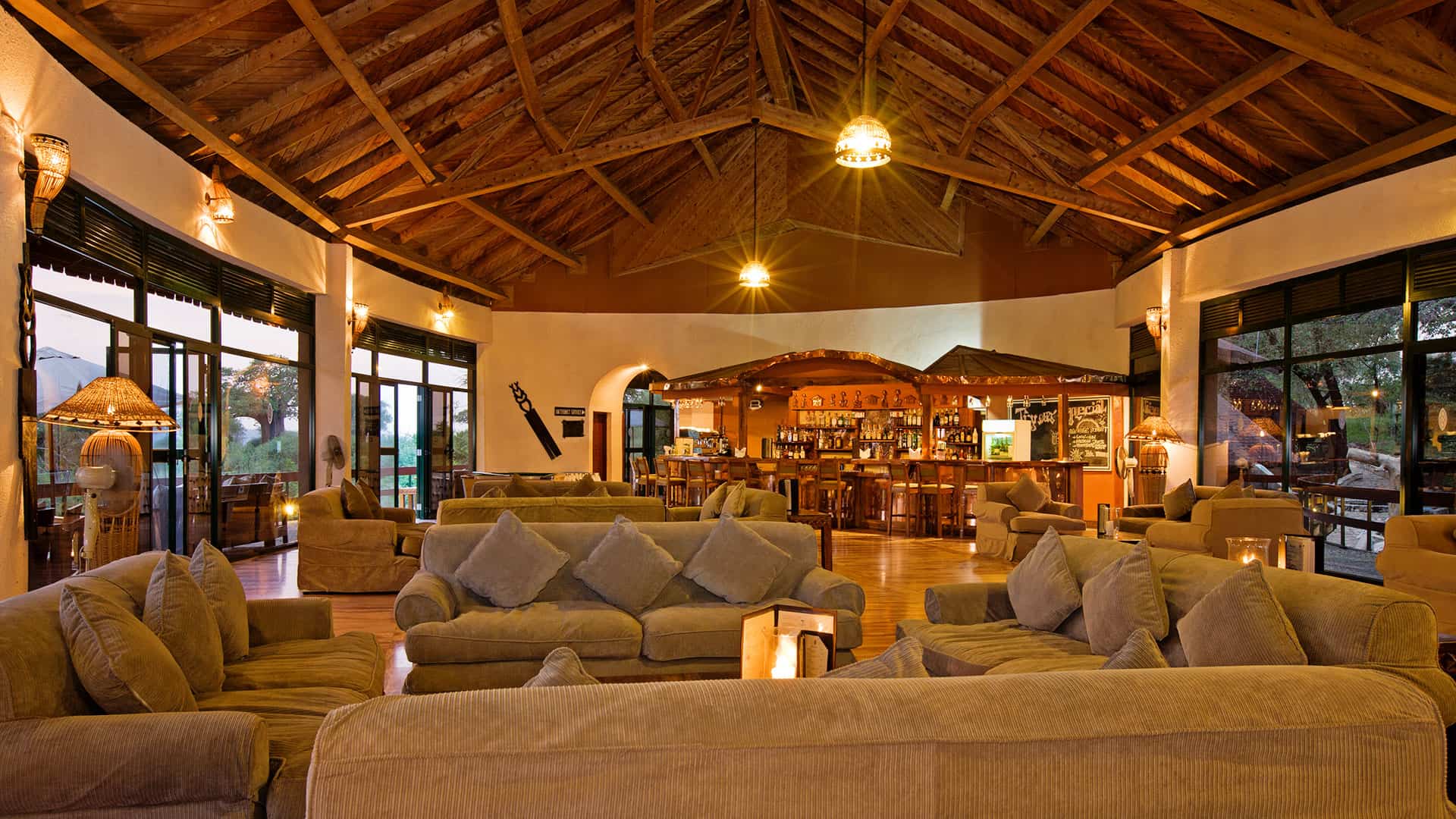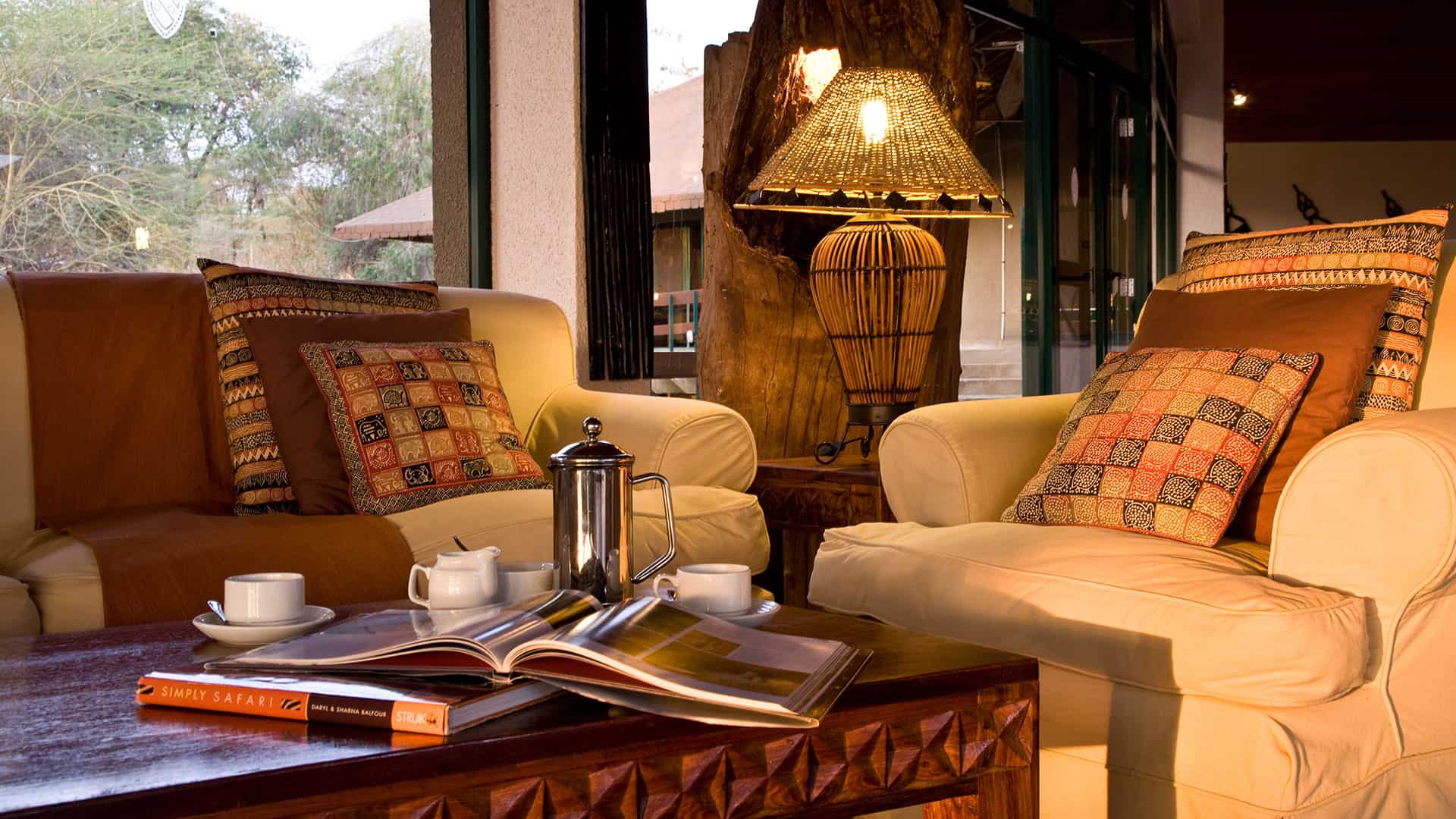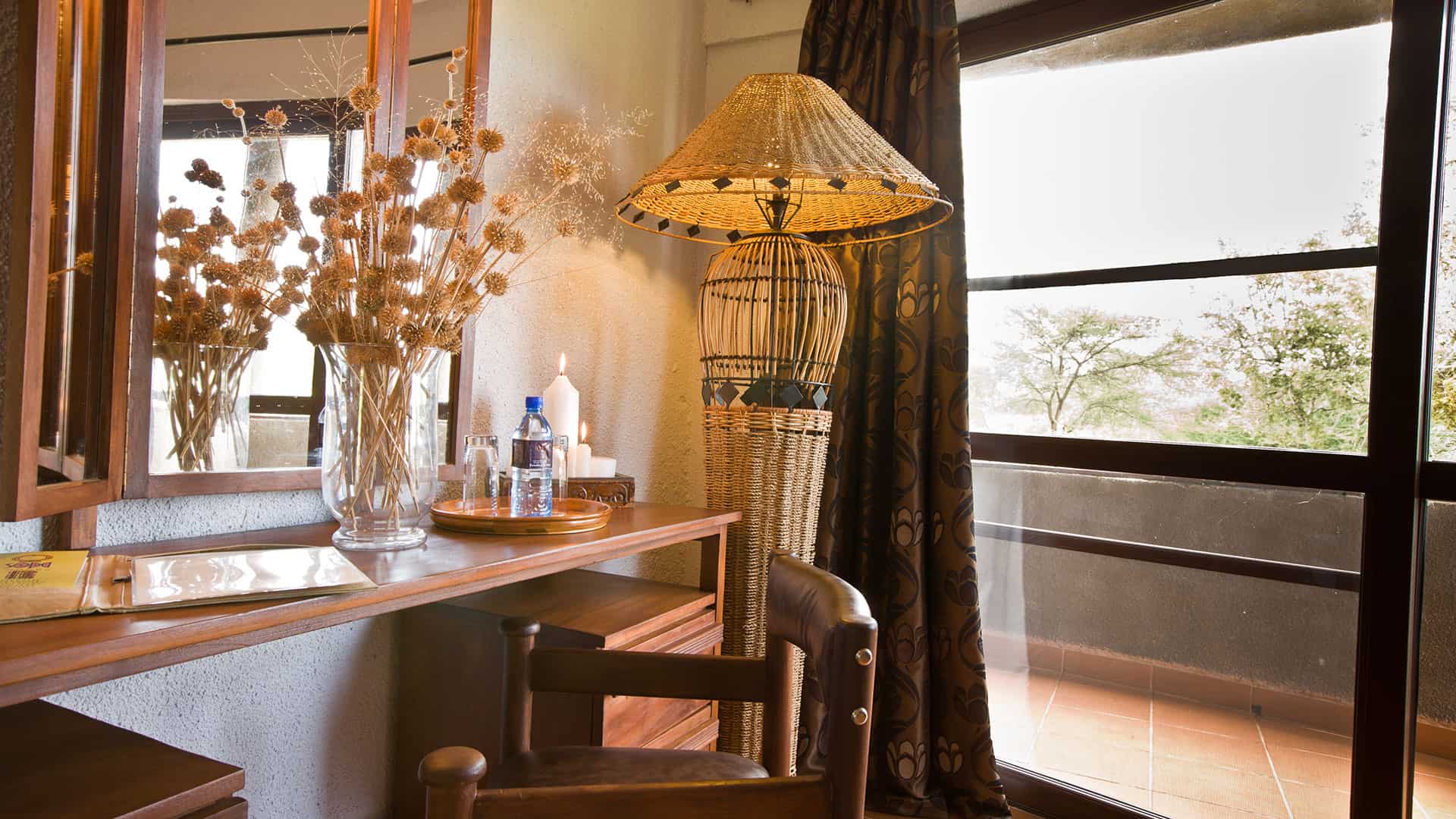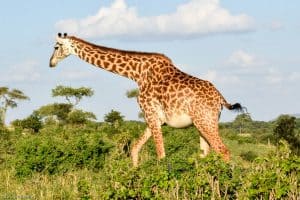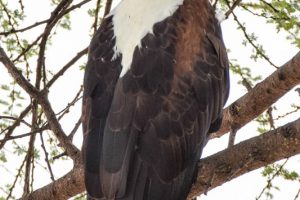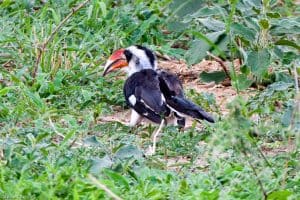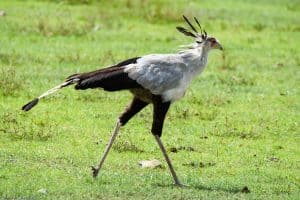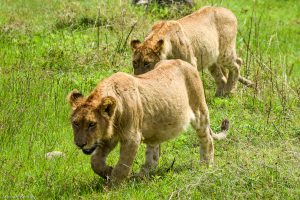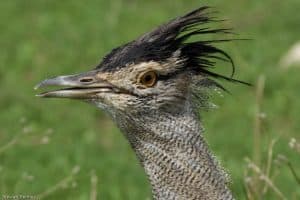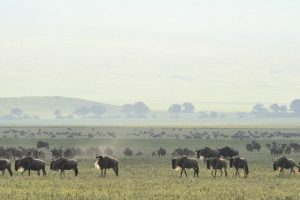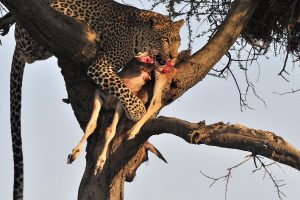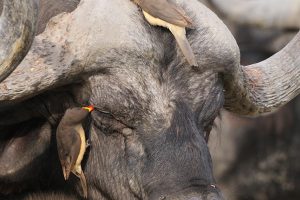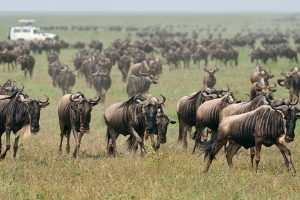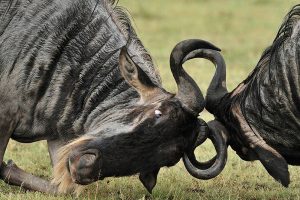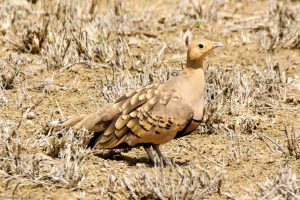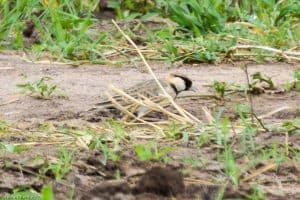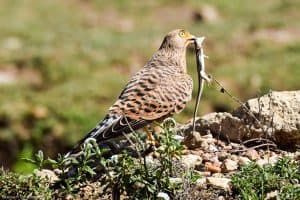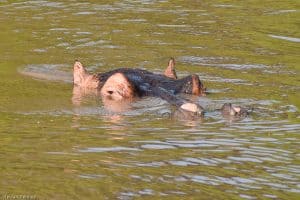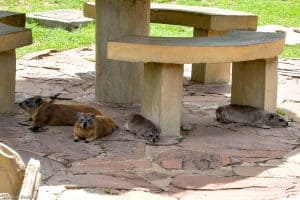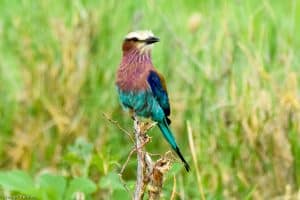NORTHERN TANZANIA
THE GREATEST WILDLIFE SPECTACLE ON EARTH
Birds & Wildlife in the Serengeti & Ngorongoro Crater
(26th February – 7th March 2020)
Participants: Margaret Connell, Lynda Styles, Stuart & Celia Todd
Tour Leader: Peter Roberts
Safari Driver Guide: Roger
Ground Tour Operator: Tanzania Birding and Beyond Safaris
Tour Pace & Style: Private tour with Slow pace Birding , mostly Big game Safari
DAY TO DAY TOUR NOTES
Margaret & Lynda made their way in the afternoon up to Heathrow for an overnight flight via Addis on Ethiopian Airlines. From their WhatsApp messages it seemed they enjoyed their surprise upgrade to Business Class. Peter, Celia and Stuart met up at Glasgow Airport In the afternoon to fly on KLM to Amsterdam Schipol and overnight at the Steigenberger Airport Hotel – a very easy, on time flight with my luggage checked through to Tanzania and Celia and Stuart just with carry-on bags. Transfer to the hotel was quick and easy and the hotel very pleasant.
Margaret & Lynda arrived into Kilimanjaro via Addis, Ethiopia by about 12.15pm. They were transferred the short distance to the KIA Lodge and relaxed for the remainder of the day. Meanwhile Peter, Celia and Stuart returned to Schipol to fly on KLM at 10.15am direct to Kilimanjaro, arriving at 8.35pm. After the usual inconsistent immigration nonsense we got to KIA Lodge about an hour later and met up with Margaret and Lynda before getting to our beds.
After a 7am breakfast we were ready to head off with Roger, our safari driver, towards Tarangire National Park. Firstly we drove around the outskirts of Arusha along a brand new bypass road to drop off a whole big bag of goodies brought over from the UK for Anthony and his family. Then it was onward to Tarangire passing far too many police speed checks along the way. Arriving at the entrance gate it was interesting to find they had done yet another remake with new entrance buildings since my last visit 15 months ago – to my mind a waste of money that would be better spent on real conservation projects. Anyway, we were now “in the territory” with roof up and watching for game as we went the short distance to lunch at the Safari Lodge. First Impala, Waterbuck, Giraffe, Elephants and Ostriches were all met with much acclaim. After a good lunch we did a little walk in the grounds to where the staff had staked out an African Scops-Owl for me and to look at where Margaret had stayed on her previous visit. Then we continued on with a game drive taking us further into the National Park
and to our overnight accommodation at the Sopa Lodge. On the way we saw plenty more game and began a list of some of the more obvious and bright birds that “non-birders” would still enjoy looking at: Red-throated, Yellow-throated and Crested Francolins, Lilac-breasted Rollers, Von-der-Decken’s, Northern Red-billed and African Grey Hornbills, Bare-faced Go-away birds, Yellow-collared Lovebirds, Yellow-billed Storks and a closely admired young Martial Eagle.
Close to the lodge, as we were about to call it a day around 5pm, the heavens opened and a deluge of seasonal rain came down – perfect timing! We were quickly checked in to our rooms, had late afternoon tea and coffee and a bit of down-time before meeting again at 7pm. A good evening meal was enhanced with service from an ever-smiling Lilian, still hard at work despite a difficult life.
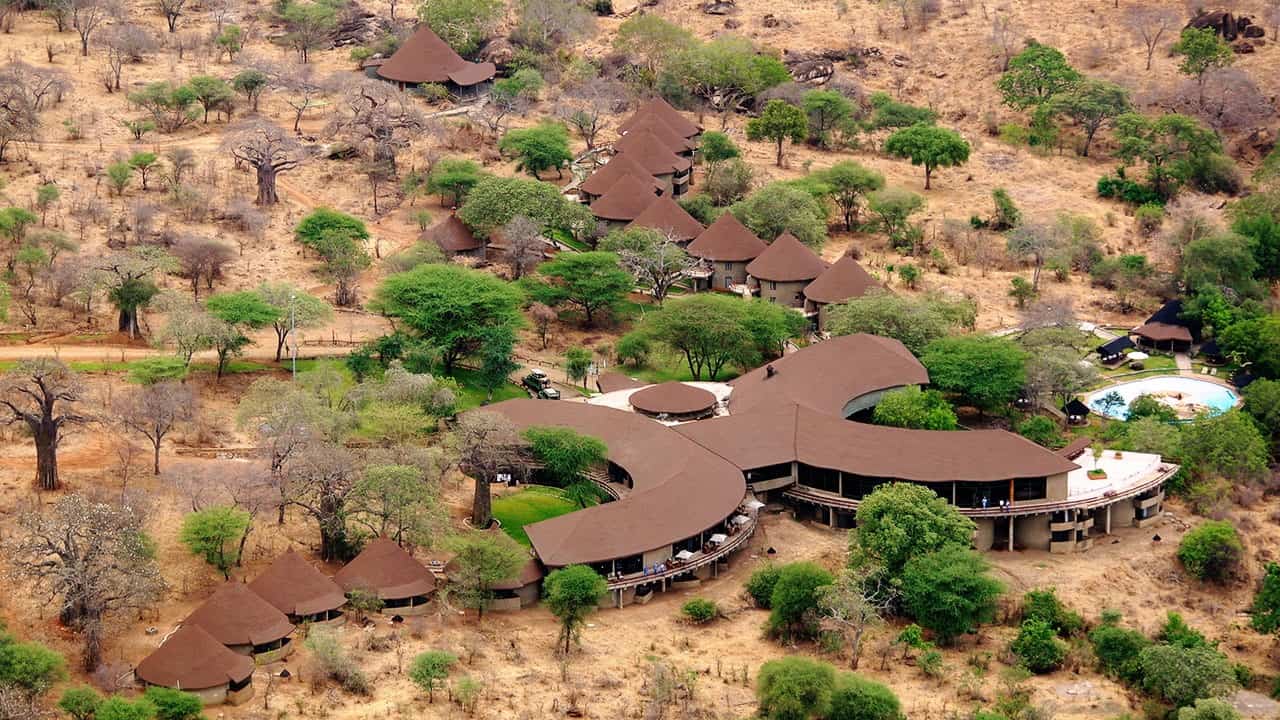
We had a 7am breakfast and afterwards went straight out for the morning, arriving back to the lodge by midday. Despite yesterday afternoon’s rain the track was passable and we managed to complete the loop round to Silale Swamp. The vegetation is quite lush and tall with all the recent rain, so finding game animals was tricky and we came across just one lone bull Elephant having a wonderful scratch against a tree after a mud bath – but this right at the end of the morning and close back to the lodge. However, the vast expanses of acacia thorn-bush studded with giant Baobab trees produced a few moments of interest. A couple of Giraffes were ever-popular as were several groups of delicate Impala and even more fragile-looking Dik-Diks. A lone Bohor Reedbuck at the swamp edge was the first of the trip along with a few Warthogs. It was fun to watch a large group of 15 or more Banded Mongooses (not mongeese!) going about their daily business at very close range.
Of course there were plenty of birds throughout and some of those that inspired closer scrutiny included a quartet of Hamerkops at their vast domed nest in a baobab above a stream, which also held a couple of nests of Red-headed Weaver (plus the birds). Other “non-birdwatcher’s birds” were a magnificent pair of Saddle-billed Storks, perched up African Fish Eagle, bright Wattled Starling in full breeding plumage complete with dangly black wattles against a yellow face, and a few Ostriches. Various coucals, cuckoos, hornbills, swallows, shrikes and masses of doves, weavers and francolins were pretty-much ever-present as were the resounding songs of Winding and Rattling Cisticolas! Silale Swamp itself was a bit disappointing, with virtually no water-birds, but lots of water:-clearly they are spoilt for choice as to where to go. However a very impressive Goliath Heron was a bonus sat atop a large dead tree. In the “Other stuff” category was a medium-sized Leopard Tortoise plodding along the side of the track.
Back by midday, we had time for a quick wash and pack of bags before a pleasant lunch al fresco by the pool. The weather had been kind to us this morning, with no rain and quite cool for a while, but it was bright and sunny now and heating up nicely. We departed Sopa Lodge by about 1.15pm and set off at a decent pace towards the exit gate, stopping only occasionally: for a spiffy Red and Yellow Barbet, when passing more Elephants and a tree full of White-backed and Lappet-faced Vultures close to where some Lions were reported hiding in the thick grass; clearly they had made a kill and the vultures were waiting to descend when they’d had their fill.
Once back on the paved road we set off westwards to Ngorongoro with just a few brief stops. First was for the Pink-backed Pelicans in the roadside Yellow-billed Stork colony by the entrance to Lake Manyara National Park. Next stop was halfway up the impressively steep slope of the Rift Valley to look down on the big expanse of Lake Manyara below – very full of water and the flamingos not evident. There were fuel stops, registering as we entered the Ngorongoro Conservation Area (NCA) and then off tarmac again as we ascended to the Crater rim. Arrival at Serena Lodge was a bit later than hoped for at about 6pm – good to get out of the bone-rattling of the last stretch of road and be able to peer directly down into the Ngorongoro Crater below us.
The Serena Lodge was a new one to me, but is ideally placed for what we want to do and (apart from giving us rooms miles away from the restaurant) seems very comfortable and put on a great Acrobat show before a good supper.
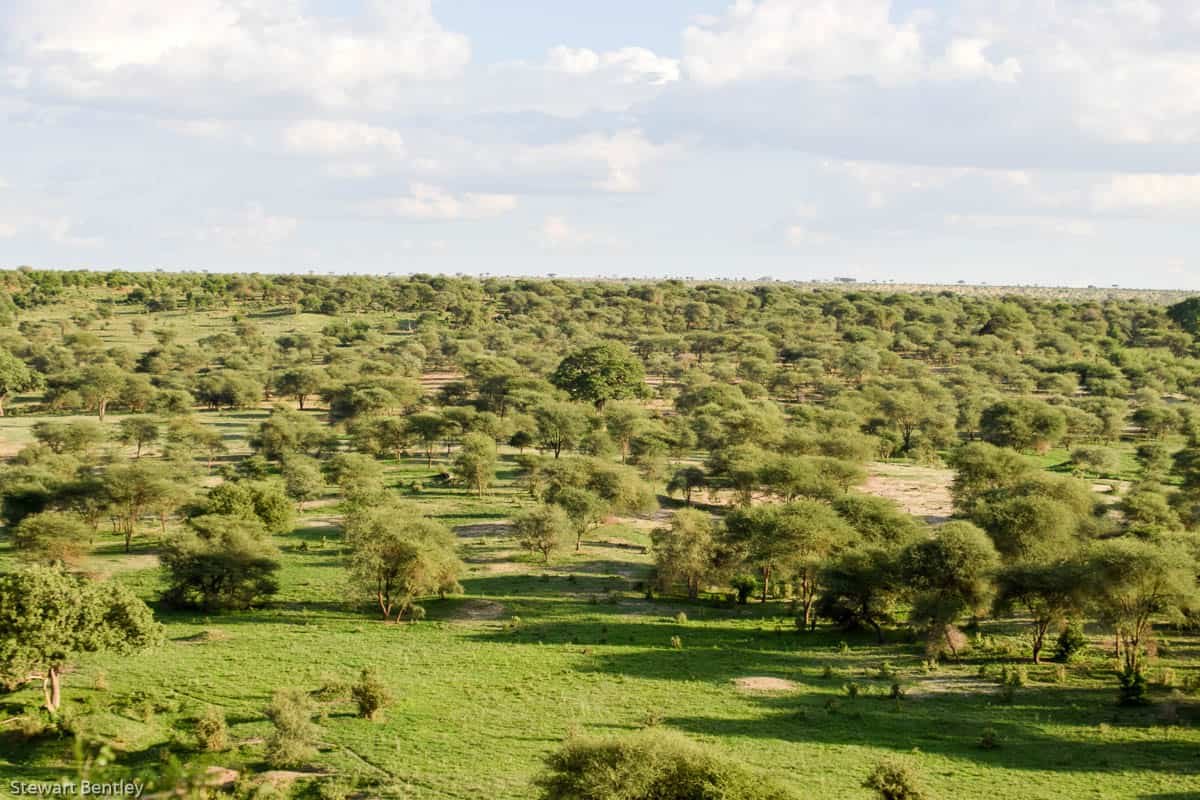
After breakfast we set off at about 7.30am to spend much of the day in the Ngorongoro Crater, which, first thing in the morning was swathed in a cover of white misty cloud below us. The steep one-way descent road took us down past a lovely immature, pale blond Tawny Eagle and a migrant Rock Thrush to the vast crater floor where a resident population of Wildebeest, Cape Buffalo, Thomson’s and Grant’s Gazelles, Common Zebra, and Eland awaited us. With the excessive rains that have occurred of late, there were some tracks that were impassable, but we managed to get around much of the usual circuit and see plenty of what we’d anticipated and hoped for. The game herds were largely concentrated in the short grass area directly after our descent and this was where some of the high concentration of predators – especially Lions and Hyenas – were gathered. It wasn’t too long before we came across a trio of young male Lions lounging about oblivious of our attentions at the side of the road. Typically they were not doing very much other than at one point getting up for a pee and slumping down right below one of the gathered vehicles that gave some
temporary shade from the mid-morning sun. We assumed they were well fed as a little further along there was a more active scene of Spotted Hyenas and larger numbers of Golden and Black-backed Jackals squabbling over the dismembered, skeletal remains of a Wildebeest. One Hyena had possession of the pelvis and some vertebrae while another paraded around with the head and neck vertebrae. Other Hyenas unsuccessfully tried to join in the bone-crunching, while the jackals were more cheeky and successful at darting in and grabbing smaller scattered titbits. All around, the large gatherings of Wildebeest, Zebra and gazelles – all with young – carried on grazing and getting on with life as normal; presumably happy knowing it hadn’t been their turn to be Lion supper last night.
Interspersed with this activity were many good bird sightings – some appealing only to me, such as the noisy Pectoral-patch Cisticolas buzzing all around us and the many Northern Anteater Chats, Fan-tailed Widowbirds and Rufous-naped Larks. But there was plenty else of more general and spectacular appeal; Grey Crowned Cranes with chicks, Pied Avocets, Black-bellied Bustard and Rosy-throated Longclaw.
Our main goal today was our only chance on the tour to see Black Rhinoceros that survive here (possibly as few as 20 or so). Much of the Crater is open, short-grass savannah and Black Rhino are mainly browsers on bushes, so it always surprises me that they come out into this open area at all. But they do and can usually be fairly easily spotted, even if at great distance, as they look like huge dark boulders in a sea of green. We got word from other vehicles that one was not too far off, so Roger did a sterling job of working his way around the slick, bumpy, muddy tracks to get us as close as legally and safely possible. Thus we found a splendid chunk of a Rhino with very long, spikey horns, a fair distance away, but clearly a splendid “graviportal” beast that looked a lot closer through the telescope.
Bird-watching continued to be interesting with sightings of huge Kori Bustards, 2-3 weird Secretarybirds and many Abdim’s Storks along the way as Roger set out to take us down to the edge of the soda lake, now a massive, much more freshwater feature requiring some careful driving to reach. Further Spotted Hyenas and a rumour of another Rhino diverted us towards one of few picnic sites in the Crater where we ended up at about 11.45am. After a leg-stretch and a chance to use the WCs we decided we may as well stay and have an early lunch before the crowds arrived (although the Crater was pleasantly quiet today). As the weather prevented us from reaching the Hippo pools it was good to find 20 or so in the freshwater lake at the picnic site. Here too we shared our lunch with some very precocious Rufous-tailed and Speke’s Weavers, Superb Starlings, Helmeted Guineafowl and a few Black Kites overhead – all looking for the proverbial free lunch. The weavers got quite lucky!
After our picnic lunch we set off again with the intention of circling the soda lake to run back through the Lerai Yellowbark Acacia forest to the Ascent Road – apparently the only way to get out of the Crater at present, with the other track options too muddy. But we noticed a gathering of safari vehicles precisely along the route we’d decided was too dodgy to try for risk of getting bogged down. So we carefully worked our way along towards them and came to a sensible stop where the track turned into a quagmire and various other vehicles were stuck. But from this point we scanned and found what the attraction had been: more Rhinos. By now the weather had turned cloudier and threatened rain. This made viewing better with none of the heat haze and shimmer associated with the morning’s Rhino sighting. Two animals side by side were closer and clearer. A bit more scanning took both myself and Roger by surprise, as here was a total of 9 Black Rhinoceros out on the grassy plains in ones and twos scattered over half a mile perhaps. An absolutely remarkable sight that neither Roger nor I had witnessed before.
We left the over-enthusiastic drivers up to their axles in mud to sort themselves out (though Roger had provided assistant to one previously). Turning around we did the long circumnavigation of the lake to exit the National Park by about 4pm. Along the way were further great finds. A few water-birds showed up including some very colourful bright pink Greater and Lesser Flamingos plus a few waders and ducks such as Blacksmith Plovers and Cape Teal. We were back in the thick of the large game herds again here and with them were the inevitable predators. Spotted Hyenas were everywhere – wandering along the road in front of us, lounging about and interacting with one another. A total of over 25 were noted during the day and at least 17 in one spot on our exit journey with one obvious Alpha Female with two almost cute cubs.
The Lerai forest provided a few last birds, with perched up Lappet-faced and Ruppell’s Griffon Vultures, before setting up the steep Ascent Road, climbing 2,000′ or so on a newly paved road to the crater rim. Arriving back by about 4.30pm gave everyone a chance to relax, take afternoon tea and coffee and sit on their verandas and view the wonderful Ngorongoro Crater below.
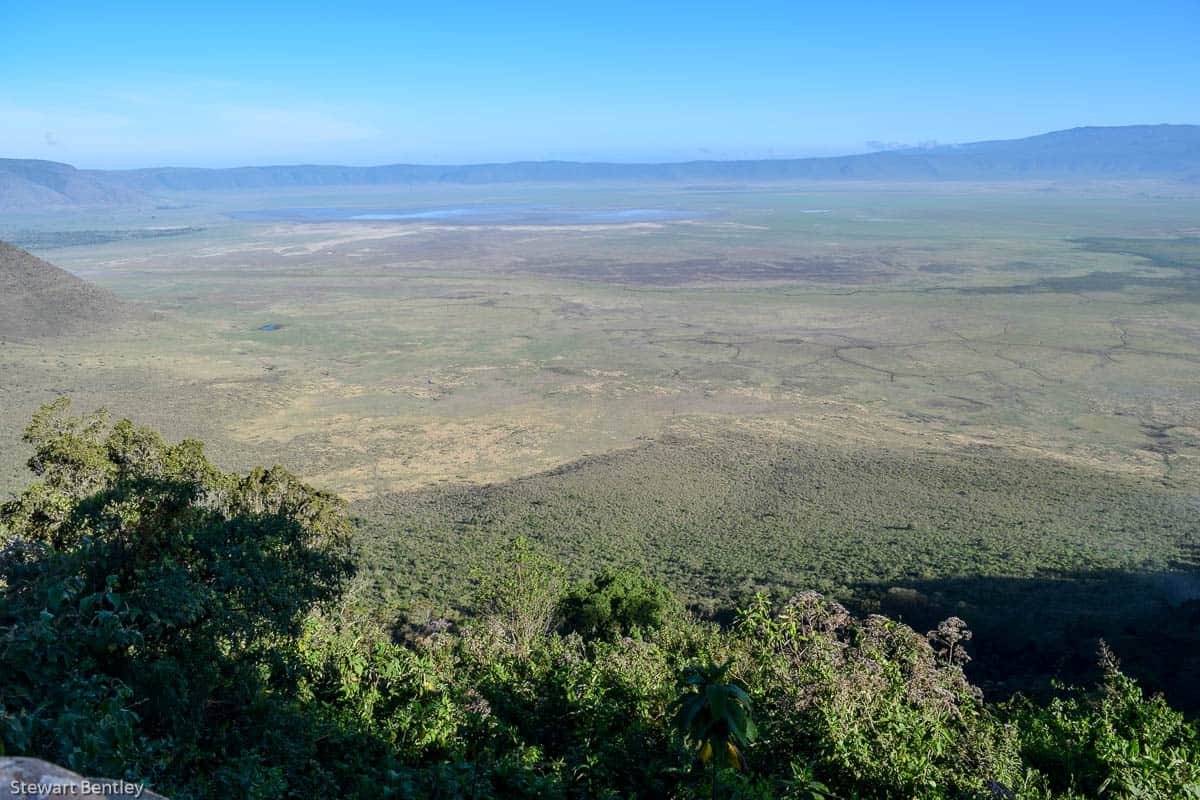
We left the Ngorongoro Crater this morning at 8am on our continuing journey west towards the Ndutu area of the eastern Serengeti. There was heavy mist and light drizzle as we left that I hoped might just be the cloud at 7,000′ on the Crater rim. Unfortunately, as we descended the cloud persisted above us and produced intermittent rain all morning. We passed damp-looking Maasai villages and herds of cattle, goats and sheep, increasingly mixed in with Wildebeest,
Zebra and antelopes as we neared the short grass plains. A few short stops were made as we passed these herds and smaller gatherings of roadside Giraffes before we arrived at the archaeological site of Olduvai Gorge by mid-morning.
It was pleasantly dry while at Olduvai and it was good to be there early and virtually the only visitors. We took our time, with a visit to the very recently rebuilt museum and interpretive area telling us all about the archaeology that has gone on here and the life histories of the various species of early hominids whose remains, fossils and artefacts were discovered here. I managed to get in a quick bit of birding in a much greener and lush setting than I usually find at Olduvai. Plenty of the “usual suspects” were present and correct: Green-backed Camaroptera, Chinspot Batis, Banded Parisoma, Beautiful, Scarlet-chested and Variable Sunbirds, White-browed Scrub-robin, Vitelline Masked Weaver, African Grey Flycatcher, Little Bee-eater, White-naped Raven and more. We finished our time here with a well-presented lecture from one of the staff as we overlooked the layered rocks of the gorge and pondered on the life and times of our ancestors, the early hominids.
We continued on westwards through the NCA by about 11am, driving for many miles across open short grass plains, now sadly in a light drizzle that forced us to keep the roof down, so much less serious game-viewing was possible along our way. However, the herds of migratory Wildebeest, Thomson’s and Grant’s Gazelles and Common Zebra were very impressive. The Wildebeest weren’t in dense herds, but liberally scattered across an almost 360 degree view over the totally flat plains all the way to the horizon – clearly uncountable thousands. We found a few birds of interest on our way, with several very close Tawny Eagles and a couple of Eastern Chanting Goshawks notable. In amongst the many Abdim’s Storks (some of them spiralling high up into the sky on thermals, presumably on migration) were a handful of White Storks. We’d intended/anticipated spending longer out here, with a break for our picnic and arrival in mid-afternoon to Ndutu. But “rain stopped play” and we decided to head straight on to Ndutu Lodge, arriving a little after 1pm where we ate our picnic lunch in the open-air lounge area.
After that we checked in and took a break until 3.30pm by which time the rain had stopped. Margaret wasn’t feeling 100% so took the afternoon off, which was a shame as it turned out to be a very good one. Roger took us off along the rutted, muddy tracks through the open, scrubby acacia forest towards nearby Lake Masek. This was where a Leopard had been seen in the morning and where we found a small group of landcruisers assembled by a half-eaten young Zebra. The Leopard had apparently made the kill but the kill was too heavy to haul up a tree for safe-keeping. Everyone was expecting it to return to its food at some time, so were waiting – some more patiently than others. We got lucky, arriving
shortly before it was relocated climbing up into a nearby tree, then a little later climbing back down again. After this grand result we decided to go exploring and continued to Lake Masek for a while. Here were a few water-birds such as a lone Great White Pelican, masses of Gull-billed and White-winged Terns, a few waders including Kittlitz’s and Three-banded Plovers plus a gathering of Hippos. On our return we watched the bizarre spectacle of a Black-headed Heron catching, then swallowing a decent sized Grass Rat – yuch! Roger called in back at the Leopard spot and found a few landcruisers of keen photographers still waiting for the Leopard to come and retrieve its half a Zebra. Again, we got very lucky, as after a bit of a wait, when we very nearly called it a day, the Leopard was found up another tree and we stayed on. We ended up with some wonderful views of the Leopard slowly exiting the tree when it saw a Hyena trying to take off with its supper. In between such a splendid centre-piece to the afternoon we incidentally came across some good birds too. Grey-breasted Francolin, Eurasian Hoopoe, Southern Red Bishops and Fischer’s Lovebirds were all big enough and/or bright enough to make an impression.
We returned quite late – close to 7pm – with a brief break before supper. Towards the end of our evening meal the endearing Large-spotted Genets came into the lodge via their personal walkway to have their feed and be photographed by the guests.
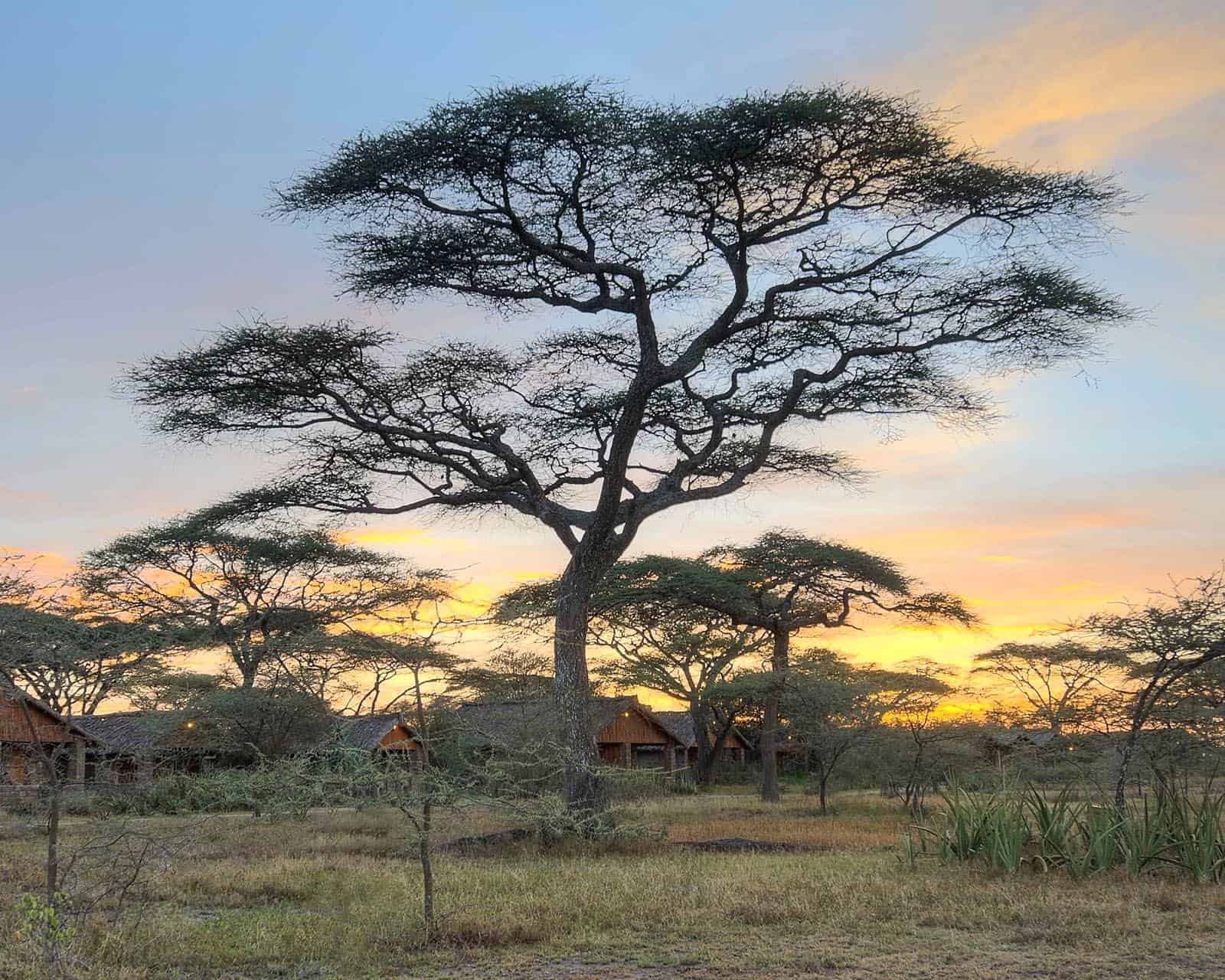
A welcome change in the weather today with sunshine beginning to dry the tracks a little. However we were still sliding and slithering along slippery, slick tracks across the short grass plains with Roger doing some excellent navigation and driving and managing not to get us stuck in the mud. With the excessive rains over the past months (more or less continuous since October and the heaviest for 35 years) the vegetation in the Ndutu area is exceptionally high, making finding the quite abundant Lions and the not so abundant Cheetahs very difficult. Neither were seen this morning despite Roger’s bet efforts. However we had some interesting sightings as we carefully made our way around the edge of a very full Lake Ndutu and out to the big swamp. Giraffes were good value, with several groups out in the open and drinking. While watching these in the low sandy basins Celia and Lynda spotted Bat-eared Foxes sunning themselves. These are delightful little creatures and best found right here. 6 or more were seen well before they wandered off into the thick herbage. Perhaps the main and most memorable interest of the morning was the sheer number of Wildebeest seen, accompanied by large numbers of Zebra. For much of the morning we managed to be out on the seemingly never-ending flat grass plains all by ourselves. This is always a lovely feeling, made so much better when you find yourself in wall-to-wall Wildebeest as far as the eye can see. We gently motored
into their midst and stopped to watch their antics and listen to the somewhat unmusical grunting that these huge herds make – so redolent of the Serengeti. The Ndutu area of the southern Serengeti ecosystem is potentially the prime area to watch the spectacle of the migration and calving of Wildebeest. They are now at the end of their 500-mile circular migration as they follow the rains and the resultant regeneration of green grasses all the way north to the Mara area of Kenya by August, then back again to rest in the ensuing long rains on the short-grass plains of the south-east of Serengeti. Here they calve and rear their young to a stage when they can again move on north and west by May or June.
The open grassland and scant acacia scrub plus the saline hollows of the lake edge held a few brightly coloured and obvious birds that caught our attention. A trio of male White-bellied Bustards calling loudly to each other were noted on the way out. Lilac-breasted Rollers popped up, a group of Hooded Vultures sat together in a treetop and several plum-ugly Marabou Storks were nevertheless centre of attention and photographic efforts for a while. Crowned and Blacksmith Plovers were common and there was a good look again at the endemic Gray-breasted Spurfowl. Roger’s ever-keen eyes managed to find us a pair of the secretive and scarce Three-banded (Heuglin’s) Courser.
After lunch back at the lodge we took some time off until 3.30pm when we set out with thunder and dark clouds in the distance. Happily that is where they stayed and it was a dry afternoon. Our main goal this afternoon was to try and find Cheetahs. They had been seen this morning and we headed off in that direction, skirting around Lake Masek and far out onto the short grass plains beyond the open acacia scrub. We’d not gone far when a passing Landcruiser gave us information about a nearby Leopard in a roadside tree, so we made a brief detour to see if we’d get lucky. We did indeed! This was a different animal to that seen yesterday and was much less skittish. In fact it was in both senses of the phrase very “laid back” as it rested on a wide and low branch in an acacia in absolute full view. A large belly suggested a recent good meal that needed sleeping off. We were thrilled with such a good and clear sighting – even more so as we were the only vehicle there until the last couple of minutes of watching it from all angles for 15 minutes or so. This exquisite feline barely bothered to open its eyes to look at us in the first five minutes. Thereafter it woke, and finally yawned, stretched, got up and wandered down the tree to disappear into the typically tall vegetation.
After this, we resumed our quest for Cheetahs, passing a couple of slightly unexpected Elephants on the way – one with a single tusk, the other with none at all. We passed several vehicles coming the other way that had seen the Cheetahs and gave Roger ideas of where to look. Roger did a fantastic job of negotiating miles of very slippery, muddy terrain out onto
featureless open plains where the search began. We knew they were here somewhere in this, the best and most reliable place to find these elegant and unique cats. We linked up with another vehicle looking for them and went round in searching circles over a large area full of the tell-tale tyre-track signs of gathered vehicles who had previously been watching here. We met another vehicle that gave us even more specific information using a dead tree with perched Lappet-faced Vultures in it as a reference point. We continued circling and searching but to no avail. It was hugely frustrating in a way, but testament to the vastness of the area and the ability of the wildlife to wander off, do its own thing and disappear without trace at a moment’s notice. Time ran out and we high-tailed it back the way we’d come, arriving at the lodge by about 6.45pm. A shame about the Cheetahs, but what a phenomenal Leopard!
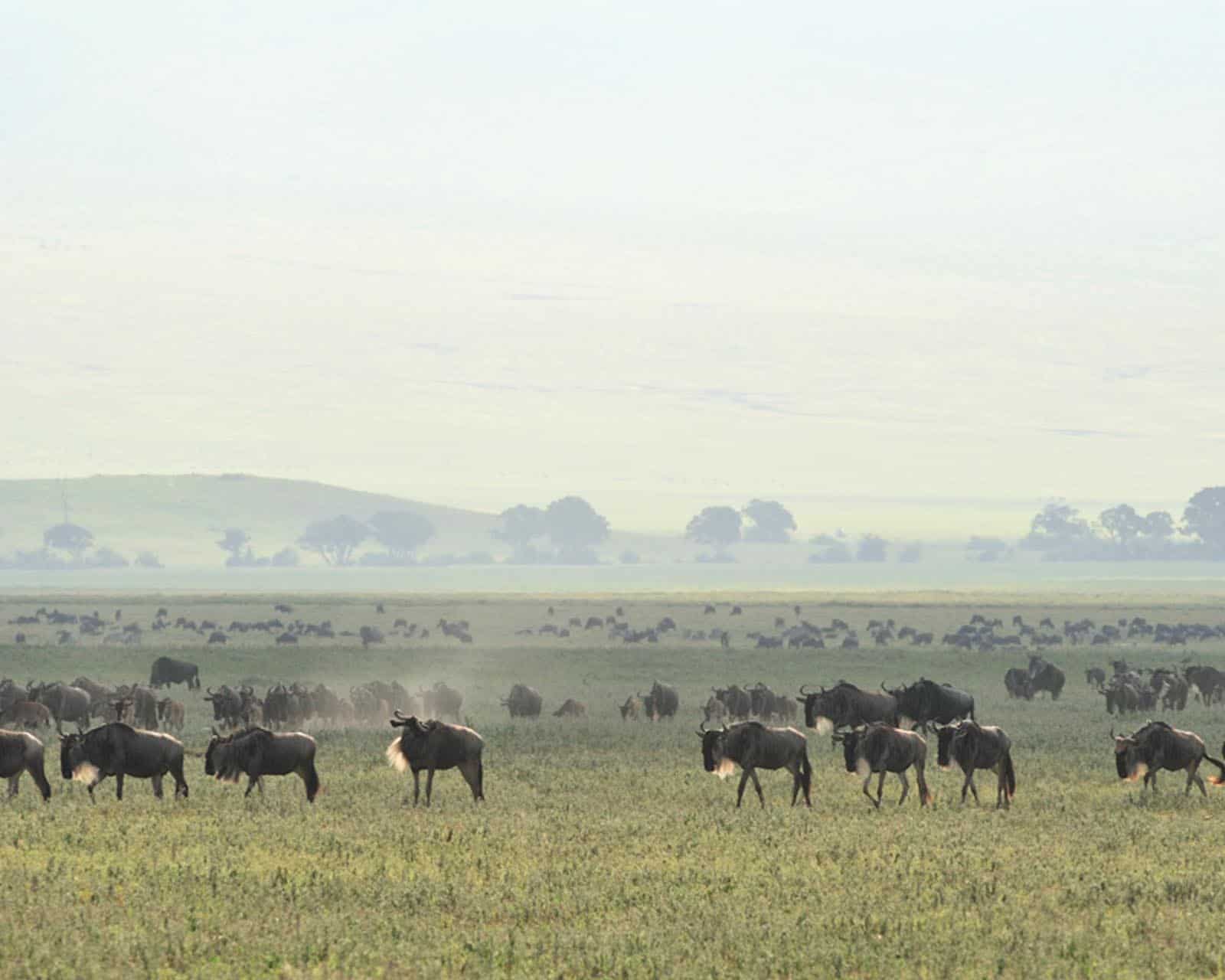
A lot of rain overnight precluded any possibility of returning to the area where we’d tried to find the Cheetahs yesterday afternoon. However, Roger had other more workable alternatives and ideas to try out. Thus, after breakfast we departed with all our gear to the area where we’d briefly seen Leopard on our first day here – this being still accessible. It was still lightly raining and we travelled with the roof down. After a bit of driving along various mucky tracks that dead-ended and asking other drivers we located the purpose of our venture; a pair of Lions. Usually when you find adult male and female Lions on their own it means they have separated from the pride to mate. This morning was no exception with the female inviting copulation far more often than my erudite book on animal behaviour suggested. Despite being surrounded by numerous landcruisers they seemed not to worry about the lack of privacy and the voyeurism and “got down to it” every five to ten minutes or so. The female would wander across to the splendid male with his large mane, circle him and lie down. He immediately went into action, with the average mating being slightly less than the researched 21 second average! The coupling finished with a flurry of moaning, mewing, growling and snarling after which she wandered a few yards away and rolled on her back before settling down for another 5-10 minute break. It was a great sighting and always a bonus to see Lions actually doing something other than lazing and sleeping. We were happy that by the time we left in mid-morning it had stopped raining and we continued on our journey with roof up and fingers crossed.
It was not possible to take the direct route from Ndutu to Naabi Gate where we enter the Serengeti National Park. Instead we had to drive two sides of the triangle back across the newly made dirt road to the official entry arch of the Park and back along the main road westwards. This was OK as we had all day and it was a good and productive game drive just seeing what we might see. Serendipity kicked in as not far along into the short grass plains we saw a gathering of landcruisers and got into position just off road to admire our first Cheetah. This was a lone animal (sex never determined) that was quite content to sit low in the long grass and stay there. Once in a while it would raise its head or sit up to show us a little more of its magnificent form, but otherwise it stayed put. With the imminent appearance of a Park Ranger we returned to the track and continued on our way. We were passing masses of Wildebeest, antelopes and Zebra and began coming across Spotted Hyenas. By the time we’d reached Naabi Gate for our picnic at 1pm we’d encountered lone beasts and groups totalling 19 animals, all lazing in close view, often near to our vehicle in nice cool, wet, muddy spots. Birds on our way were quite good: Chestnut-bellied Sandgrouse, Pallid and Montagu’s Harriers, Fischer’s Sparrow-larks and Lesser, Greater and Grey Kestrels perched on the very sparse and isolated bushes in the vastness of the flat, grassy plains.
After our picnic break at Naabi we continued the drive westwards across further huge areas of flat, lush grass with surprisingly little game on it other than the occasional Zebra and Coke’s Hartebeest – evidence of the poorer nutritional value rather than lack of game. We were certainly able to appreciate the huge scale of this ecosystem that we had been travelling through for several days and had now covered a further c. 50 miles of — all the more remarkable for being preserved almost fully intact. Closer to the central Seronera area we turned off the main road where an overflow of water from one of the marshy areas was causing the largest flood of fast-flowing water I’d ever seen here in all my previous 34 visits. Roger took us out on alternative tracks that became more and more of a 4×4 experience as we careered along through grassy, slippery and wet trails at high speed to avoid being bogged down. Another landcruiser followed close behind us and we both arrived after a long session of this cross-country wrangling at the Kati-Kati Tented Camp by about 4.30pm. It was quite an adventure with some of us getting mud=spattered through windows left open as we sped through the more mucky stretches. The camp is a semi-permanent tented camp with just 12 tents set up on a rise on the acacia-studded slopes and looking down over the plains below in the very heart of the Serengeti National Park and ecosystem. It was a warm welcome and we all settled in to our spacious tents and later gravitated towards the camp fire after some of us braved our first camp-style showers brought to our simple en suite shower and toilet facilities.
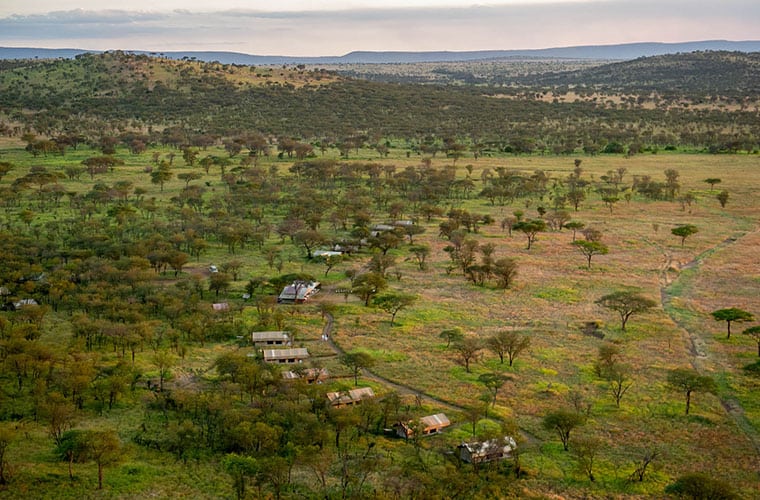
The Serengeti is a vast preserve of 5,675 square miles, with a further 3,200 sq. miles protected in the surrounding Ngorongoro Conservation Area – the whole ecosystem is the size of Belgium! The Seronera River area with its braided small meandering streams has associated riverine or gallery forest of Yellowbark Acacias (“fever” trees). Here is often the best area for finding Leopards and Lions. Thus we set off in dry, sunny conditions for a full day out with picnic lunch in the specific hope of finding Lions with more Elephants as a bonus. However, with the excessive rains the streams were still torrents in places and a number of the tracks impassable in some areas; plus the grass has grown high: not quite as “high as an elephant’s eye”, but enough to make Lions hopelessly difficult to find. Roger drove us around large areas of the Central Serengeti and checked in with umpteen other drivers, but they too had been unable to locate Lions.
However it was not all lost time. Soon after winding our way down the muddy tracks to the main Seronera area we found a bunch of landcruisers gathered together watching a tree complete with Leopard. We rolled up and saw our “three days in a row Leopard” for a while before it climbed down and wandered away. The rest of the morning was spent meandering the tracks and gaining our best looks by far of wallowing Hippos, with quite a decent group completely out of the water on the muddy banks of the river allowing us full view of their portly stature. It was our aim to find our first Nile Crocodiles in the same areas and we came across several quite large and active individuals; one a good 4.5 metres long. Another new animal for us today were small numbers of Topi along with a few better looks at Coke’s Hartebeest.
We pitched up at the Seronera Visitor Centre by about 11.30am and took time to stretch our legs and do the informative loop walk around the kopjes where 1-2 bright pink and purple Agamid Lizards hung out. After the walk we were ready for an early lunch, so had our picnic here before too many other tourists came by with the same idea. I had been wondering where all the Rock Hyraxes had gone as we did the interpretive walk and now we found all of them lounging, not on their natural habitat of the kopjes, but on the concrete picnic tables with sunshades keeping them cool.
The remainder of the afternoon was spent driving about hoping to find Lions and Elephants to no avail. Nobody out there in a landcruiser today was having any luck with that. We returned to the area where the Leopard had ben this morning and found it again, up a much more “viewer-friendly” tree and admired it through the scope. Then it was time to head slowly back to the tented camp passing several very fine Montagu’s and Pallid Harriers quartering the grassy plains for food. Quite close to home our landcruiser got stuck in the mud. Roger quickly called on the radio to a nearby vehicle that came and pulled us free within a few
minutes – all very efficient and a good tale to tell and embellish when we get home.
On our return there were cups of tea, showers and a bit of packing before a good supper and early to bed on our last night in Tanzania.
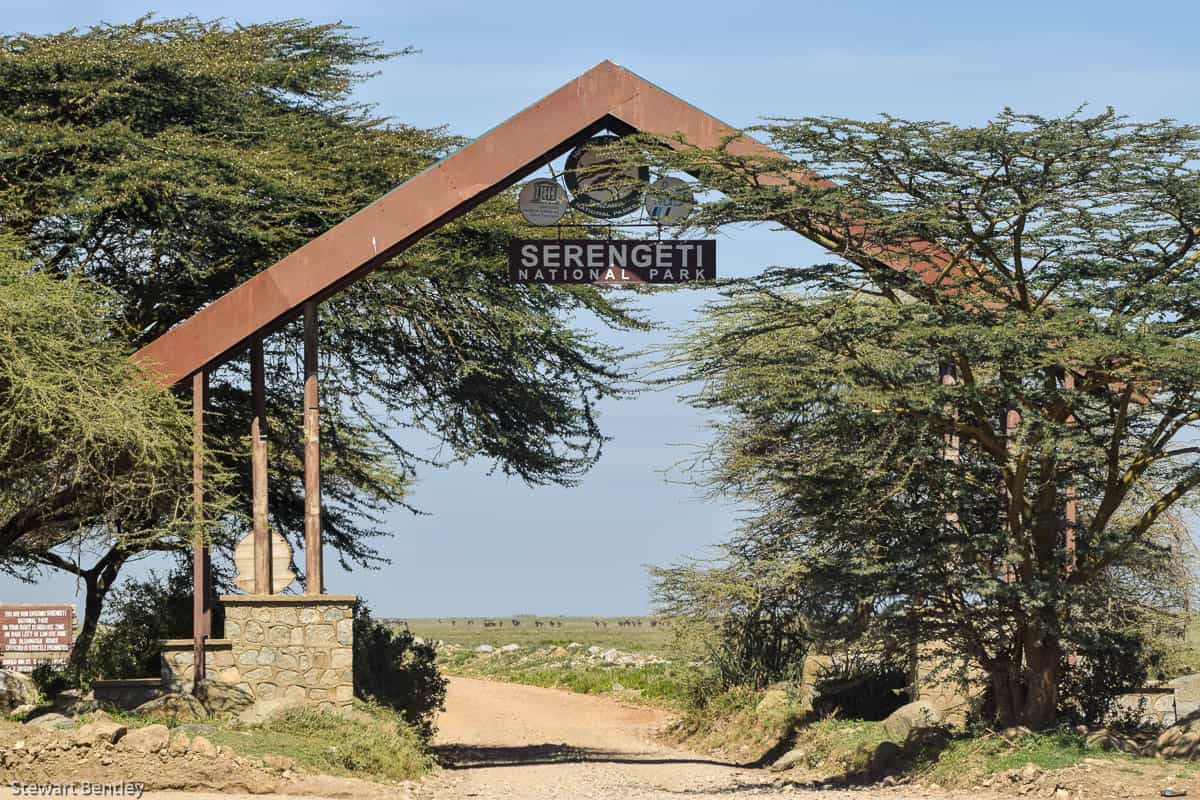
We had a 7am breakfast and departed Kati-Kati Tented Camp with all our bags packed at about 8am. We had a couple of hours of game-drive before needing to be at the airstrip to check in for our 11am flight back to the domestic airport in Arusha. The hope was, of course, that some Lions might do the decent thing and give us a last minute show – but they didn’t. Roger of course was trying his best and drove us around every likely spot within striking distance, but again, nobody was having any luck. We did see some very good action from numerous Hippos including one large individual walking out in full view and many others in a tight gathering immersed in their foetid pool. The usual birds showed – bustards, harriers, eagles and cisticolas and we (aka Roger) also did the good deed for the day in pulling out of the mud a deeply embedded landcruiser. Before we knew it, time was up and we were at the Seronera airstrip awaiting our flight. The flight was a good one in that it was on time, in a larger than usual twin-engine plane with plenty of space for my overweight bags and it went directly to Arusha without pick-ups along the way.
At Arusha we were met by a driver and Anthony Raphael’s charming 15 year-old daughter Stella who transferred us to “Cultural Heritage” for a good final lunch. With Margaret and Lynda’s flight out at 6.10pm there wasn’t a huge amount of time to do “Cultural Heritage” much justice with its masses of little boutiques offering all sorts of things to buy: everything from small inexpensive items to grand works of art and carvings. The fine gallery of art works and Africana cultural and tribal exhibits was given a quick look. There is some exquisite stuff there that was worthy of a much longer time to appreciate. We left at 2.30pm to transfer back directly to the International Airport for Margaret and Lynda, arriving at about 3.40pm. After saying our goodbyes to them we returned to the KIA Lodge, where Celia and Stuart had a day room to allow for a rest, wash, change and re-pack for their return journey home on KLM this evening. I remained in Tanzania at Kia Lodge to meet the next group coming in on the KLM flight that Celia and Stuart flew out on.
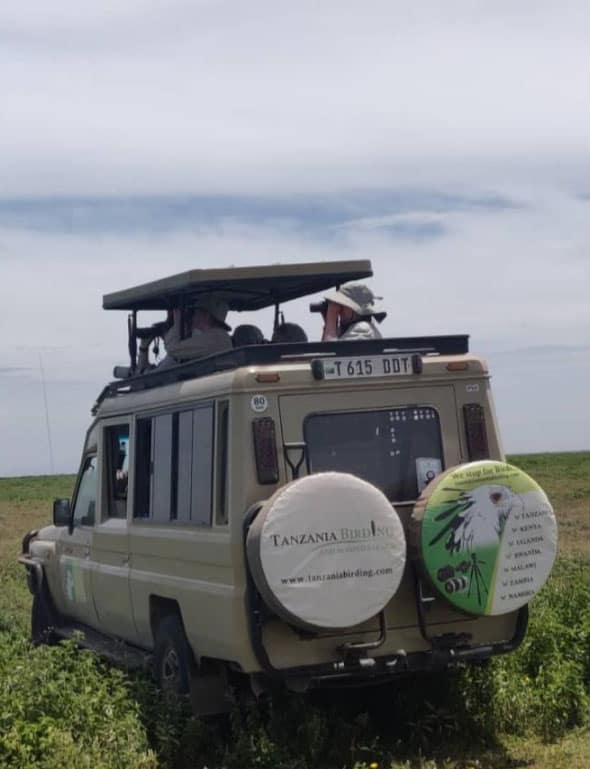
Margaret & Lynda, Stuart & Celia all got back as scheduled to their respective UK abodes later today after transfers in Addis for Margaret & Lynda and in Amsterdam for Celia & Stuart.

